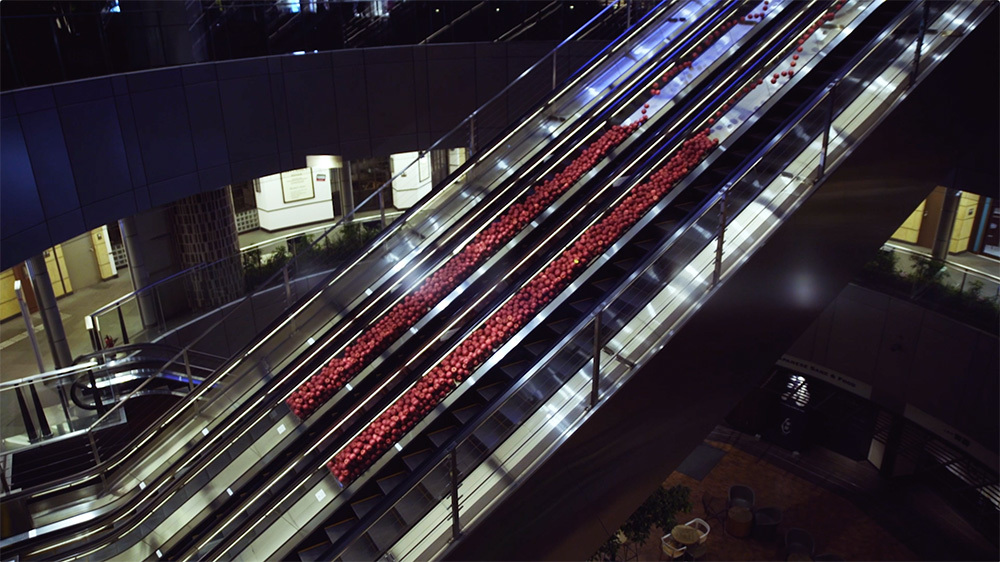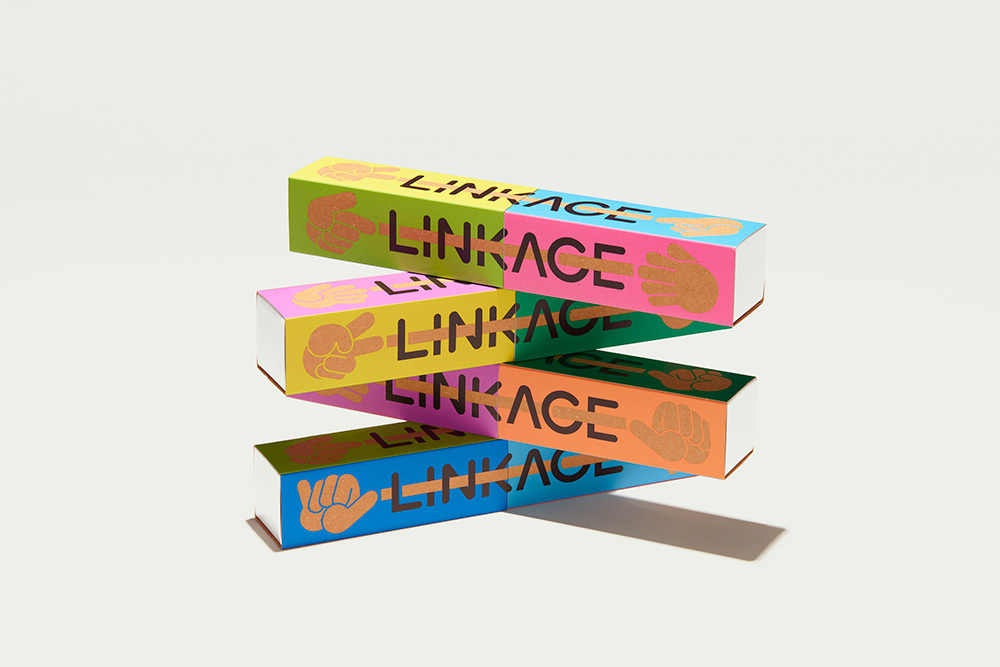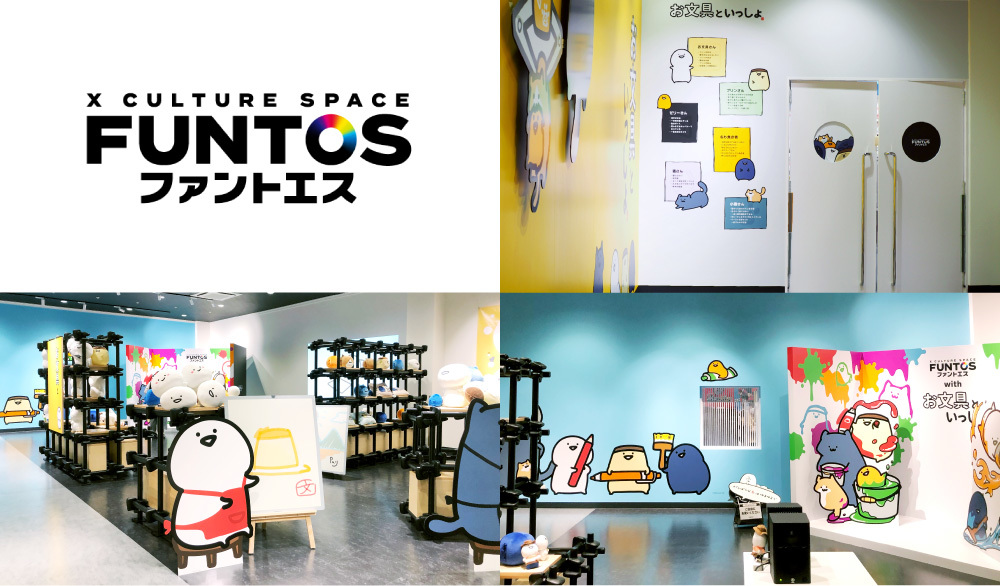"What's the state of creativity these days?" – If you want the answer, take a peek behind the scenes of the creative world. Every day, all sorts of things happen on the creative front lines. One such thing is the formation of creative units and teams by like-minded individuals. Right now within Dentsu Inc., units and teams are springing up one after another, each clearly displaying their ambitions and creative skills. What concerns them, and what are they aiming for? Understanding this is also about contemplating the future of creativity.
First up: the creative unit "HAMIDASU".
Now, let's listen closely to their voices.
【Unit Profile】
 HAMIDASU
HAMIDASU
A creative unit launched by three young members of the 1CR Planning Bureau (Tomoya Morohoshi, Kanako Ichimori, Midori Manda) who have been playing creatively beyond the confines of the company framework. By combining each member's unique strengths, they pursue new creative possibilities unconstrained by conventional advertising norms.
Can we really call ourselves creators?
Lately, it feels like there are many new creative hires who already have impressive portfolios—people active as top-tier creators or artists, or those with unique skills. I (Morohoshi) am still relatively young myself, but honestly, I'm intimidated every year by the exceptionally talented people joining the company. Setting aside whether I was top-tier during my student days, I engaged in creative activities using creative coding during university and graduate school, which led to my joining Dentsu Inc. Currently, I leverage the skills cultivated during my student years, working primarily as a Creative Technologist focused on planning and the associated prototype development.
When talking with colleagues and juniors in the same role, topics like "I want to do XX like I did in college" or "I want to do more hands-on creation" frequently come up. One reason for this, I suspect, is a dilemma stemming from the difference between how people who actively created during their student days perceive "making things" and how creatives work in an advertising agency. In today's work environment, the focus is often on the planning layer, with those in the actual production layer not handling the hands-on work. Of course, many of us in this situation, myself included, chose to work in planning, so there's often an element of "wanting what you don't have." But I think there's a common dilemma: "Are planners who don't get their hands dirty really creators?"
Break out in the interesting direction.
To confront this dilemma and satisfy my own desire to create, I continue my personal creative work under my own name while working as a creative technologist while handling projects at Dentsu Inc. While I find immense fulfillment in the large-scale projects I handle at Dentsu Inc., I also cherish the time spent creating freely, fully utilizing my sensibilities and production skills, much like I did in my student days. Many of my colleagues and juniors mentioned earlier also pursue private work for similar reasons (of course, within the company's approved framework).

Escalator Museum - Takayuki Fukuzawa + Tomoya Morohoshi + Toshiya Yui
A public art installation that opened an automated viewing museum utilizing the city's kinetic energy within the dead space beside an escalator. Selected for the Roppongi Art Night 2019 open call project, it was exhibited at the Metro Hat in Roppongi Hills Mori Tower.
While planning communication projects centered on advertising at Dentsu Inc. and pursuing artistic activities like exhibiting at art festivals and producing music videos in my private time, I began wondering: Couldn't I reconcile these two ways of thinking that I had mentally separated? If I could approach my work at Dentsu Inc. like my private work, wouldn't that free me from this dilemma?
This led to the concept of "Stepping Out." It represents my own creative activities that had spilled over into my private work. By bringing that creative approach into my professional work, I wondered if I could step outside the boundaries of how work is typically done.
Initially, I thought it was more important to declare "HAMIDASU" as a statement of my stance and ideals to those around me, rather than immediately turning it into concrete actions for work. However, within Dentsu Inc., teeming with super-talented seniors with all kinds of skills, it didn't seem wise to keep championing this concept alone. That's when MD Tajima suggested, "Why don't you form a unit of young talent with Morohoshi as the leader?" So I gathered like-minded young people and raised our flag. That became "HAMIDASU." We formed it with "young talent" because we could empathize with their dilemmas and frustrations, and simply because it was fun for us (laughs).

HAMIDASU members. From left: Tomoya Morohoshi, Kanako Ichimori, Midori Manda
A way of standing out I couldn't have imagined alone
Creative technologist Morohoshi has worked privately on creative coding and media art, art director Ichimori on typography and packaging design, and fellow art director Manda on animation and character design. Since the three have different areas of expertise and interests, the strength of this team lies in how organically we find ways to "step outside the box" that none of us could have envisioned alone. This happens when each brings their own unique work to the table or freely voices ideas they want to pursue. Perhaps this dynamic arises precisely because we're young professionals not yet fully shaped by corporate culture.
Furthermore, while Dentsu Inc. projects often involve large teams with many staff and production partners, our team's strength lies in being hands-on. We can handle everything from planning to production compactly and efficiently, all under one roof.

LINKAGE
A board game born from the communication method "Tentacle Talk." Its packaging features illustrations expressing the game experience where fingertips connect, with interchangeable sleeves to change the design. Now sold nationwide at major variety stores.
Eslite Living "Japan-Taiwan Summer Festival 2022"
Created the key visual illustration, signage videos, in-store decorations, and goods for the summer fair "Japan-Taiwan SUMMER FESTIVAL" held at the Nihonbashi branch of Taiwan's major bookstore chain, Eslite Living.
Our first project as HAMIDASU was developing "FUNTOS" with Soyu Inc. FUNTOS is an event space where visitors can enjoy collaborations with anime, manga, film, and other content at Soyu's nationwide event venues. We were responsible for a wide range of tasks, from the concept to planning content for the event space. We are currently preparing for the next collaboration.

FUNTOS with O-Bungu to Issho © O-Bungu / Kodansha
We're currently experimenting and evolving to see what kind of boundary-pushing we'll embody next. Precisely because the environment surrounding advertising agencies is changing so drastically, I believe it's the perfect time for us, who will lead the next era, to start creating new ways of working. (Sorry for sounding presumptuous!) If you have a project where you want to try a slightly unconventional approach or utilize the fresh energy of Dentsu Inc.'s young talent, I'd be thrilled if you'd feel free to reach out.
[From the Editorial Department]
The concept of "stepping outside the box" was born from the struggle: "Are planners who don't get their hands dirty really creators?" Their ability to nimbly step outside the "mold" of advertising agency creativity likely stems from a pure desire for creative expression, manifested through private work. What makes their work compelling is the sense of "playfulness" underlying their meticulous production process. We look forward to seeing what new ways they'll step outside the box in the future.
If you enjoyed this article, you might also like:
・What "Momentum" Did the Creative Technologist Bring to Dentsu Inc.?
・The Current State of Creativity
・Ideas Through Experience, Not Proposals! Prototyping: Proof Over Theory




 HAMIDASU
HAMIDASU





